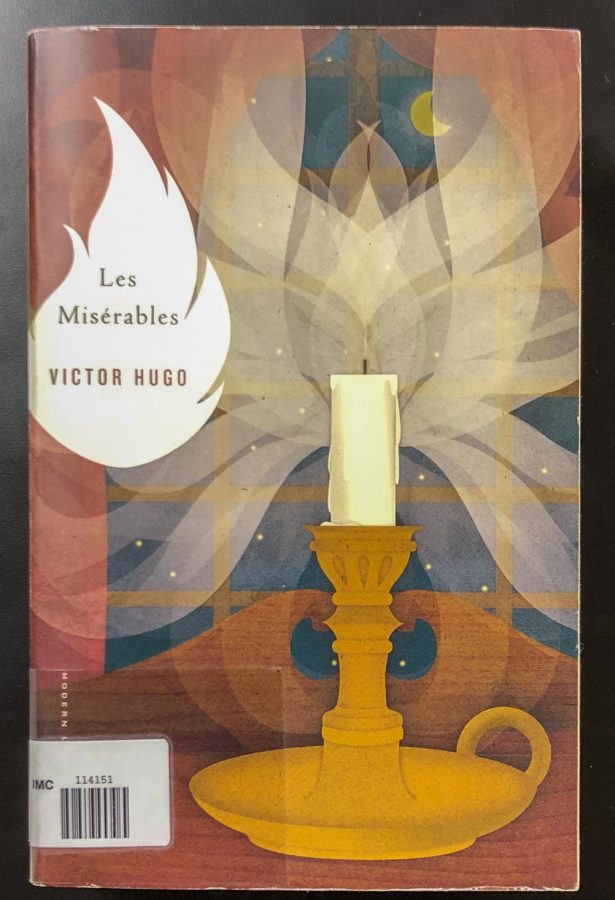Les Miserables
A condensed version of the classic “Les Miserables” is reviewed by CFHS student.
Victor Hugo’s condensed version of Les Miserables
Les Miserables translated is the miserable ones. Definitely not a book I would be dying to grab off the shelf. I never would have read it had I not heard raving reviews about the musical that was written from the book. Once I had learned it was a book, I was informed that the book itself was almost a thousand and a half pages long. I don’t know about anyone else, but in my opinion, reading a book that big seems to be a bit crazy. So, despite hearing how great it was, I never actually picked it up and read it— until this school year. Once I picked it up, I knew I had made the right decision. Les Miserables was too good for me to have missed out on.
On the first day of school, my friend, Teagan Strecker, came to school with a book. I glanced at the cover and noticed that it said Les Miserables. Now, this brought on mounds of confusion for me as I was expecting a book much larger. The book itself looked to be only about 300 pages long. I questioned her about it and she explained that a man by the name of Matt Larsen abridged the book, meaning he cut out all of the parts he considered excessively long and boring and made it readable for people in high school. He ended up cutting out about 1,100 pages and still managed to get the story across. Strecker told me all about how much she loved the book. Like most high school students, Strecker struggles when reading classics. However, even she says, “It is definitely one of my favorite historical fiction books, and one of the few classics I’ve enjoyed.” Mr. Vandehoef, one of the few who have managed to read the original version, saw me reading it during class. We talked a lot about the different parts of it and our different opinions on what was happening. When asked if he would recommend the book to others, he said, “Les Miserables deserves its status as a great work of art and it’s a great book for many people to read, eventually.”
The book itself is cut into 5 different parts focusing on different characters in each part of the book: the first part being a women by the name of Fantine, who is in financial trouble and can’t support her daughter, the second being about the struggles of her daughter, Cosette, the third is about a man named Marius who lost his father in war at a young age and who is trying to find his purpose, fourth is about a battle that many characters fight in but it mainly focuses on Marius again as well as a man by the name of Javert. All of these parts have one big thing in common though; Jean Valijean is present in every single one of them. He is a man who had a rough start to life. His years as a child and young adult were filled with poverty, stealing, and eventually, prison. After many years filled with struggles, he managed to break free from this life, but by breaking free, he bound himself to a life of lies and deceit. By spending the rest of his life helping others in need, Valijean wanted to rewrite his past. From housing an abused orphan child, to helping a man injured in battle, Jean Valijean will stop at nothing to make up for his past and present others with a hopeful, joyful future.
The first time I heard about Les Miserables, I was quite hesitant to pick it up and read it. I am very happy that I ended up doing it anyway. With the help of Matt Larsen, Victor Hugo has told me an incredible story about faith, perseverance, and redemption. It is truly inspiring and makes me want to be the best I can be. Just like Jean Valijean.

Hi! My name is Jessica! I’m a junior who very occasionally writes or draws things for the lantern. I also can be found on the soccer field and on the...

Bryson Felton is a senior photographer and part editor for the Lantern. He is also involved in the school musicals and plays, speech, yearbook, and track....

